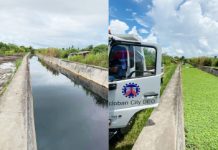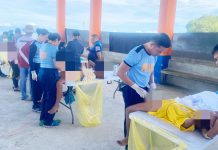TACLOBAN CITY – Six months after supertyphoon Yolanda slammed into the central Philippines, foreign aid supporting the United Nations (UN) Strategic Response Plan (SRP) have already reached US$ 441.26 million or 56 percent of the US$ 788 million requirement. Financial aid from private individuals and organizations has reached $127.22 million, accounting 28.8 percent of the total contribution for SRP, according to the UN’s Financial Tracking Service. So far, Canada has been the top donor to the recovery plan at $ 45.43 million, which accounts 10.3% percent of the total donations for SRP, the UN’s blueprint in responding to the immediate needs of the affected population. Other top 10 donors are the United Kingdom ($ 45.02 million), United States ($ 40.11) Japan ($ 30.50 million), European Commission ($ 28.19 million), Central Emergency Response Fund ($ 25.28 million) Australia ($ 20.62 million), Norway ($ 15.85 million), and Germany ($10.98 million). Of the $ 441.26 million, $ 3.32 million will be for camp coordination and camp management, $ 8.29 million for coordination, $31.94 million for early recovery and livelihood, $ 27.60 million for education, $ 73.79 million for emergency shelter, $ 1.78 million for emergency telecommunications, $ 121.03 million for food security and agriculture, $49.53 million for health, $ 22.38 million for logistics, $ 13.34 million for nutrition, $ 20.29 million for protection, and $ 61.53 million for water and sanitation. The SRP, which will be carried out until November 2014, was designed to complement the Philippine government’s Rehabilitation Assistance on Yolanda (RAY). Tagged as priority in the SRP are 171 municipalities in 14 provinces and six regions along Yolanda’s path. There are about 14 million people affected in these areas, according to the UN OCHA. The plan will benefit three million people where they will get direct assistance through programmes planned by the Food Security and Agriculture cluster interventions. Target population are three million for water, sanitation and hygiene; 2.2 million for camp coordination and camp management; 550,000 for education; 500,000 for emergency shelter; 300,000 for nutrition; 400,000 for early recovery and livelihoods; “More than seven million people will benefit from support to health services and up to five million people will receive benefit from protection-related activities,” the plan stated. Listed as priority interventions under the plan are provision of shelter assistance for the emergency and recovery phases; food assistance, nutritional support and agricultural inputs; remove debris from public spaces and recycle for use in reconstruction; minimizing environmental impact, restore water systems and access to sanitation facilities in communities, schools and health care facilities.
(SARWELL Q.MENIANO)



